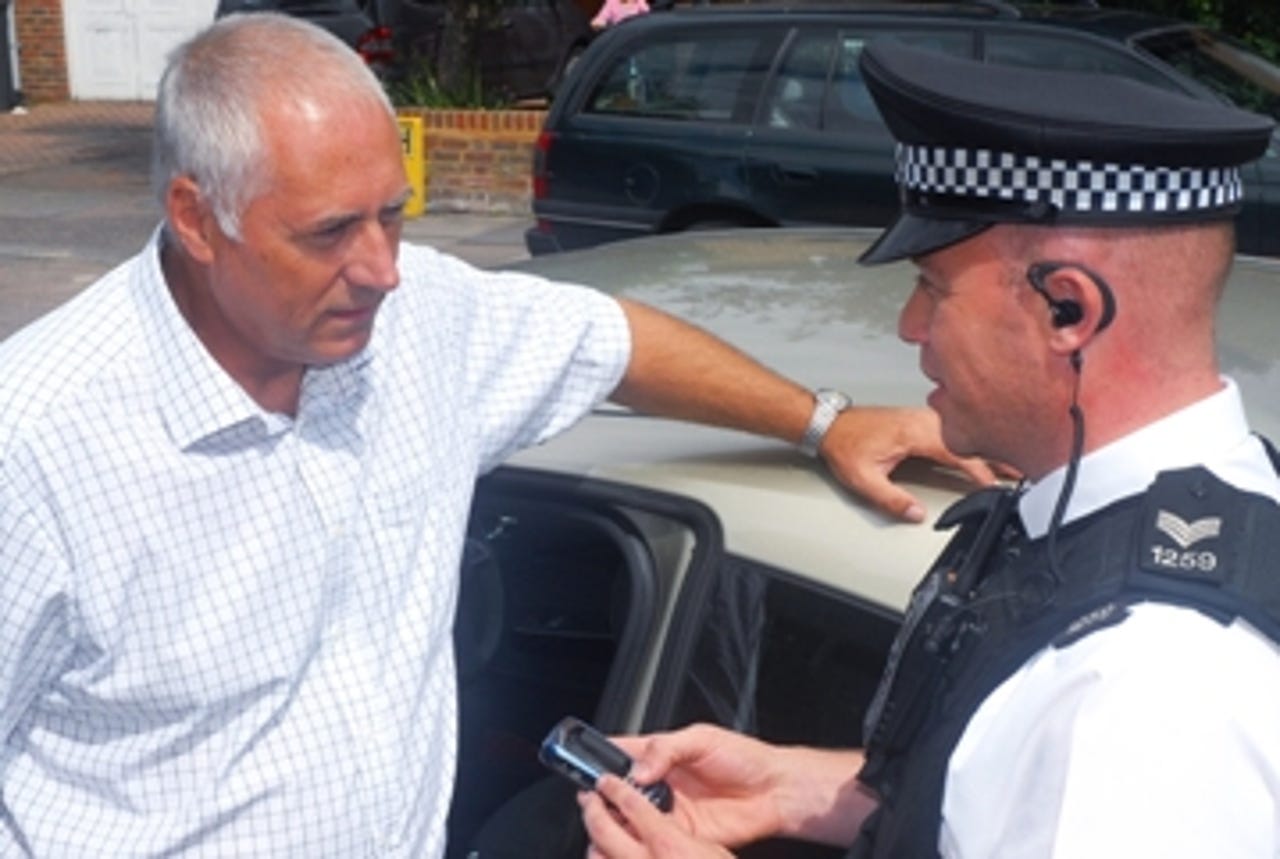Photos: Five mobile gadgets for cops


... and other emergency services
Police forces and other emergency services are being equipped with mobile devices to keep officers in contact with HQ and enable dispatchers to more efficiently allocate resources.
In August this year, Bedfordshire Police announced plans to distribute BlackBerrys to 1,000 front line officers by February 2008. The BlackBerry handsets will provide the force with direct access to back-end systems, such as the Police National Computer, warrants, the Police National Legal Database and its own custom-built briefings application. Police officers have the ability to view and edit information on back-end systems while out on the beat.
As a result, the handsets will help officers to spend less time in the station and more time on the beat.
Photo credit: Bedfordshire Council
Police Community Support Officers (PCSOs) in Lewisham have been given PDAs from O2 to help them report environmental crimes.
PCSOs in Lewisham's Downham Safer Neighbourhood teams have been trialling the devices. The borough's 18 Safer Neighbourhood teams have been given a PDA so they can capture images of environmental crimes, such as graffiti and fly-tipping, and then send them to a special council website (www.lovelewisham.org) where the image is recorded and given a unique job reference number. It is then targeted for removal and the results recorded on the website, so that residents and or PCSOs can check to see if the job has been dealt with.
Images are sent using SIM cards via O2's GPRS data network. This means the software can locate co-ordinates without the user needing to input an address. This pinpoints the exact location of the item being reported.
Using the Love Lewisham site has meant in one year the Council has tripled the amount of graffiti removed in half the time and on a reduced budget.
Photo credit: Lewisham Council
Buckinghamshire Fire & Rescue Service is using a mobile process for streamlining assessments by fire fighters of operational risks, home fire risk checks and fire safety audits.
The system from Consilium Technologies produces electronic forms that can be completed with handheld devices. This replaces the current paper-based scheme many fire services use with their inspections of high-risk commercial and residential properties. The interactive forms can be immediately transmitted to HQ servers, rather than an inspector having to manually type out findings, enabling them to complete more inspections. The service has also developed a back office portal and server, which is specifically tailored to Fire Service requirements and includes a risk management system.
Automating the process means inspectors can focus wholly on working onsite on more properties across their region - which could mean more lives are saved through improved preventative measures.
Photo credit: Buckinghamshire & Milton Keynes Fire Authority
The East of England Ambulance Service is one of the first in the country to roll out the Airwave secure digital radio network to paramedics. The service ensures the clarity of calls by cutting out other radio traffic, such as taxis. Each line can be shared by a number of ambulance units, which means dispatchers can reduce the time they relay messages to the crews.
The resilience of the service has eliminated the no-coverage areas that all services suffer when using the conventional VHF radio.
It is also possible to relay data through the service, such as location-based information. The Airwave service is expected to be rolled out to police, fire fighters and ambulance services by 2009.
Photo credit: Julian Goldsmith
As this interior of an ambulance shows, the East of England Ambulance Service uses PDA handsets to relay patients' 12-lead ECG (Electrocardiogram) data to accident and emergency wards through a GPRS service.
This is expected to migrate to the Airwave secure digital radio network, although no timetable for this has been set.
Photo credit: Julian Goldsmith